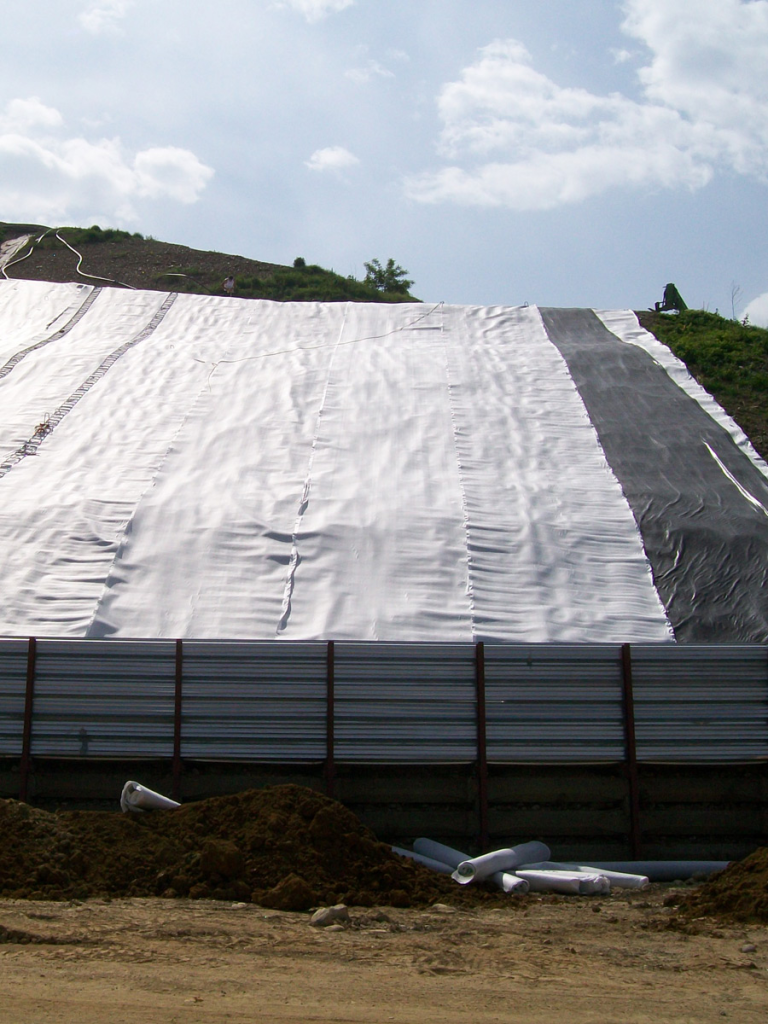What Is a Geocomposite Drain and How Can It Solve Drainage Problems?
A geocomposite drain is a specialized geosynthetic product designed to solve complex drainage challenges in civil engineering, landscaping, and infrastructure projects. By combining the functions of drainage, filtration, and protection, it ensures efficient water flow and long-term soil stability—making it one of the most effective types of geosynthetics available today. Below, we answer the most common questions related to the use and benefits of geocomposite drains.
What is a Geocomposite Drain and How Does It Work?

A geocomposite drain is a layered product typically composed of a drainage core (like a geonet or cuspated sheet) bonded to one or more geotextiles. The geotextile acts as a filter, preventing soil particles from entering the drainage core, while allowing water to flow freely. This setup effectively channels water away from critical structures such as retaining walls, tunnels, and embankments. Its composite nature allows it to replace traditional gravel drainage systems, saving both time and labor.
Where Are Geocomposite Drains Most Commonly Used?
Geocomposite drains are widely used in the following applications:
- Retaining walls – as one of the most reliable drainage solutions for retaining walls, helping to relieve hydrostatic pressure and increase wall stability.
- Landfills and embankments – for leachate collection and seepage control.
- Tunnels and basements – to protect against water ingress and foundation damage.
- Green roofs and landscaping – to manage excess water and prevent root rot.
These solutions are especially valuable in areas where soil drainage is a known challenge or space is limited for conventional drainage layers.
What Are the Advantages of Using a Geocomposite Drain Over Traditional Systems?

Using a geocomposite drain offers multiple benefits:
- Lightweight and easy to install, reducing construction time and cost.
- Consistent drainage performance, unlike gravel that may clog over time.
- Durable and chemically resistant, making it ideal for contaminated or aggressive environments.
- Space-efficient, especially useful in confined construction zones.
Its versatility and reliability make it a smart long-term investment for both small and large-scale projects.
How Do I Select the Right Geocomposite Drain for My Project?
When choosing a geocomposite drain, consider the following factors:
- Soil type and permeability – to match filtration capacity.
- Flow rate and load conditions – to ensure adequate drainage under expected pressures.
- Chemical exposure – to select materials with suitable resistance.
- Installation constraints – such as vertical versus horizontal placement.
Consulting with a geosynthetics expert can help tailor the right product specification to your project's unique needs.
In summary, the geocomposite drain offers a modern, efficient, and reliable solution to drainage problems across a wide range of civil engineering and landscaping applications. By combining filtration, water conveyance, and protection in a single system, it outperforms traditional drainage methods. Its ease of installation, long-term durability, and consistent performance make it an ideal choice for projects requiring effective water management. Selecting the right type of geocomposite depends on specific site conditions, environmental factors, and design objectives.
Comments
Post a Comment